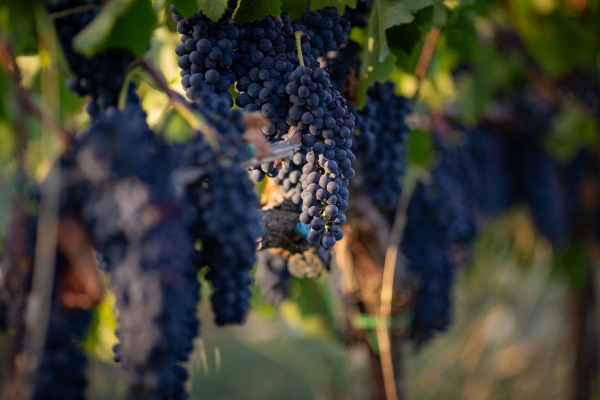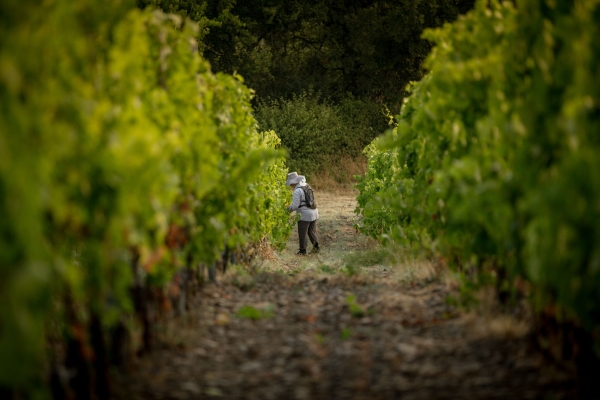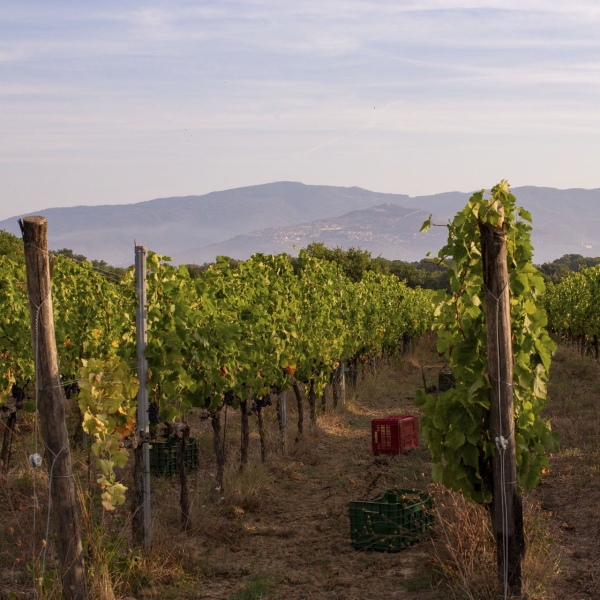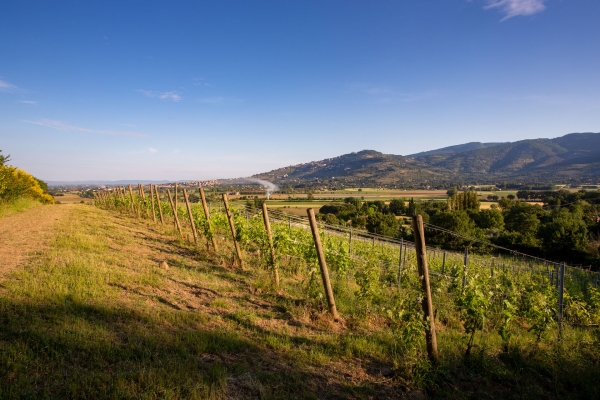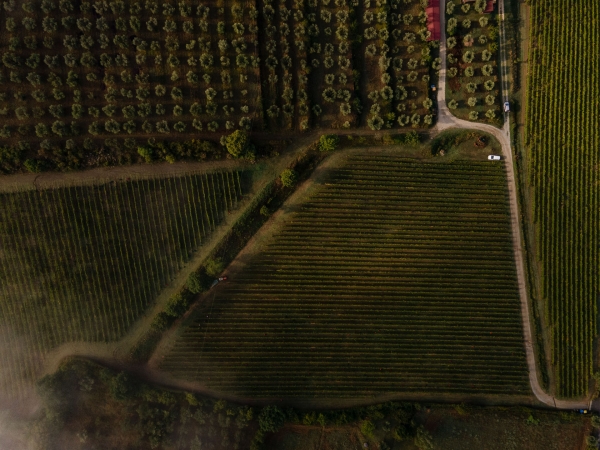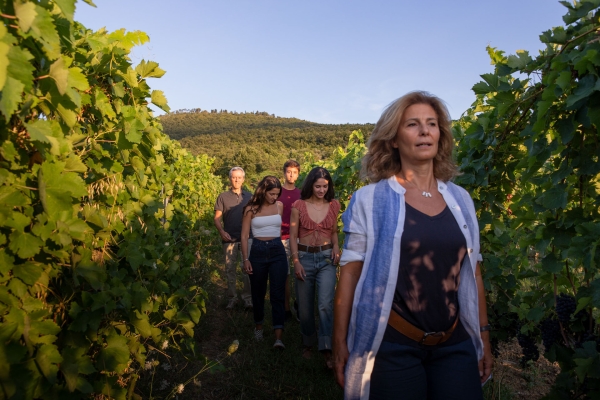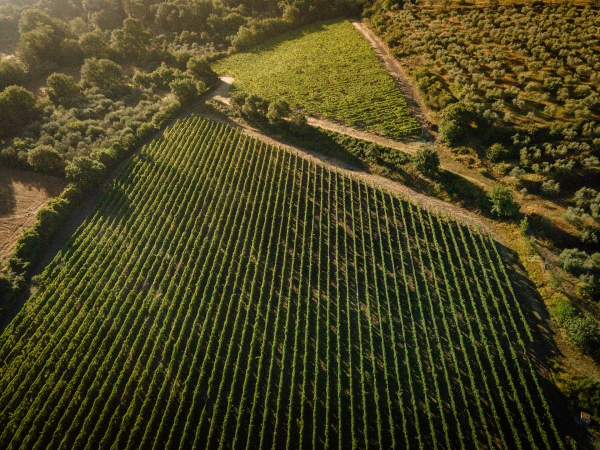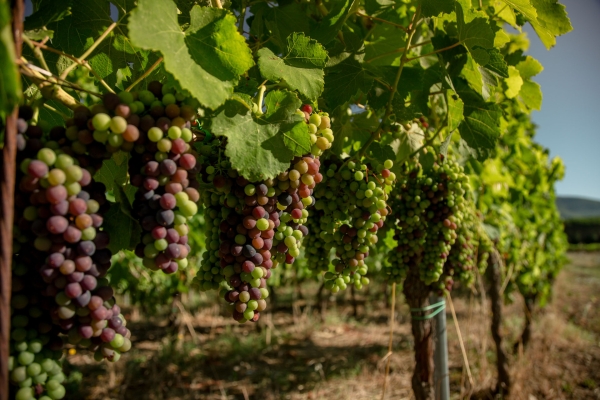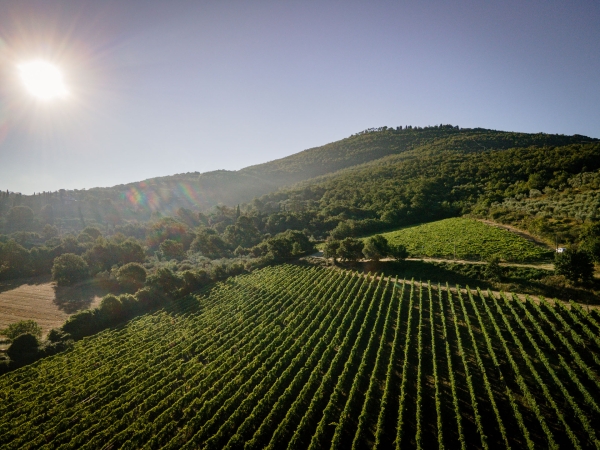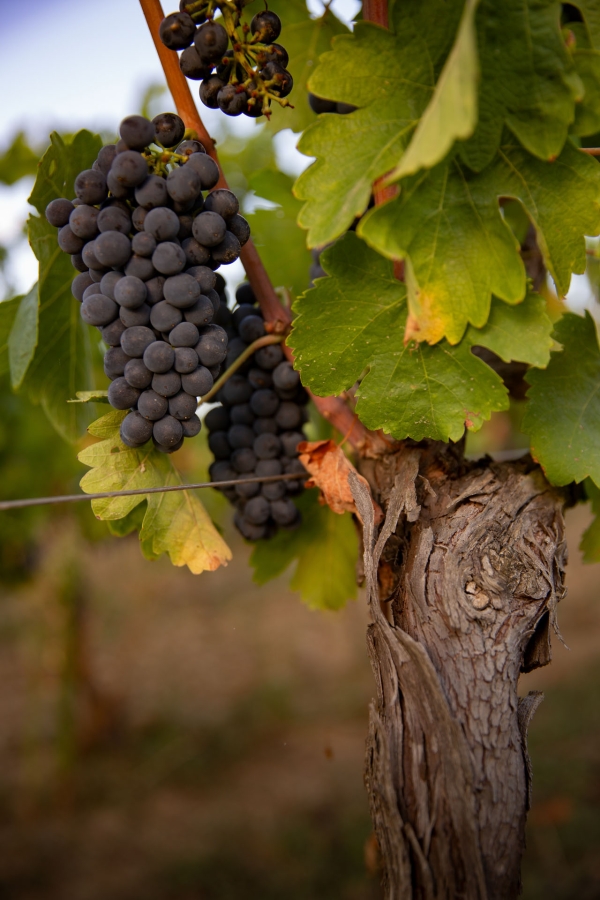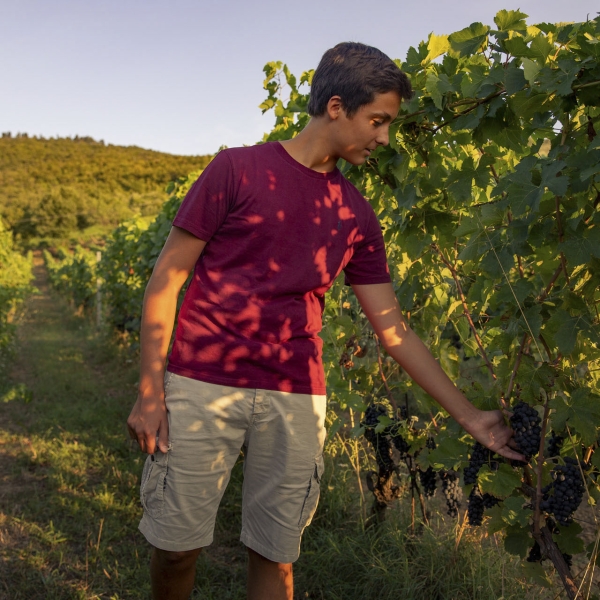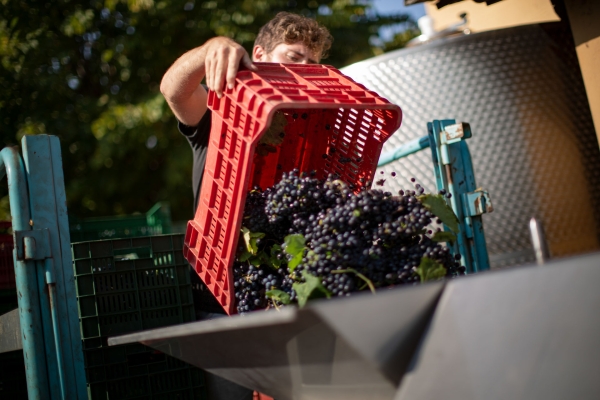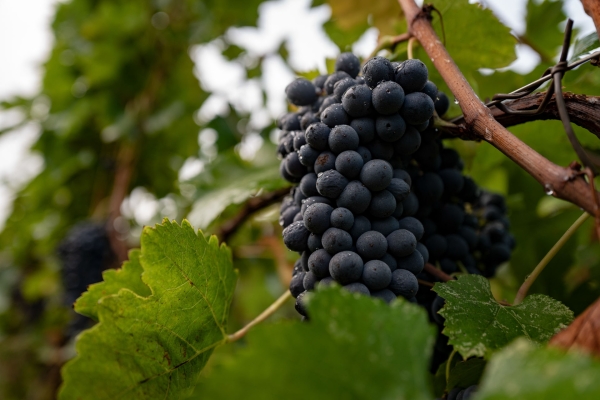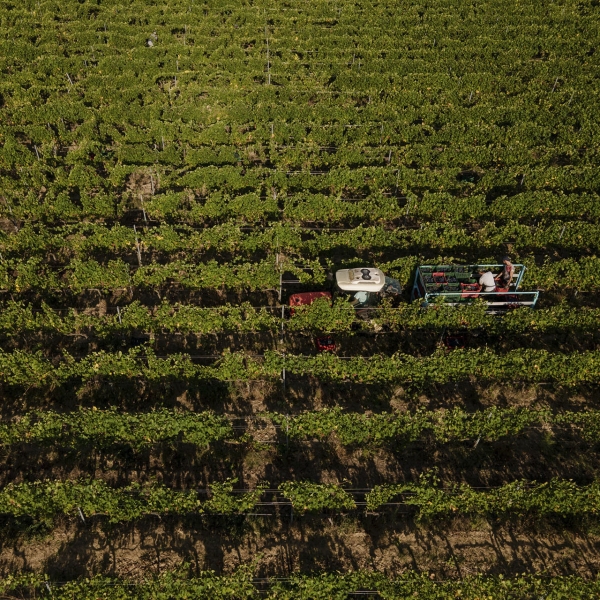The Vineyards
Fifteen hectares of vineyards
“Il Castagno” and “Poggio del Sole”
Our first estate is called Il Castagno. It is located in the village of the same name in the town of Cortona. Here is where the winemaking and aging cellars are located, as well as our home. In terms of the Cortona DOC area, we are situated on the south-eastern edge, on an intact hillside of Oligocene formation with loose, sandy, loamy soil rich in skeletal material (marl and clay schist, marl, and fine quartzose feldspathic calcareous sandstone). We face Cortona. Our Syrah vineyards were planted in 2001 and extend for approximately three hectares.
Our second estate is Poggio del Sole. It is located in the village of the same name on an undulating fluvial terrace of Pleistocene formation, with a medium-fine textured soil with an essential presence of clay-rich sands and silt. Some Syrah vineyards were planted in 2000 and others in 2003 for a total surface area of about ten hectares. More recently, we planted a small parcel of Viognier, “the handmaiden” of Syrah, inspired by the great Condrieu of the Rhone.
Both estates are situated at an average altitude of over 250 meters. There are no bordering cultivated plots at a higher altitude, only woods. Therefore, they’re sheltered from any possible chemical contamination.
France...
the land of origin of Syrah
The rootstocks and clones we used were carefully selected in the Rhône Valley, where Syrah originates. We chose them with our sole objective: high-quality fruit at the cost of lower productivity, always bearing in mind the specific soil and climatic characteristics of the terroir of Cortona, where the vines would grow.
In keeping with our desired result, the optimal planting density for our particular soil and the local climate is 5000 vines per hectare. The average grape production, when fully operational, is about 1 kg per vine (50 quintals per hectare) after a pre-selection of the bunches, which becomes less necessary as the vineyards grow. This is usually carried out during the summer.
Our winery is artisanal in nature; it’s a studio, a workshop, an atelier. And we have every intention of staying like this. Our existence, our reality, is based on quality over quantity.
Fabrizio Dionisio
Artisanal viticulture done naturally
From integrated pest management to certified organic
Our vineyards have always been cultivated with minimal use of chemicals, and so in an entirely natural way. This is in keeping with our vision of agriculture and the world overall.
Beginning with the 2014 vintage, we have used organic farming methods at the winery. We spent the first five years experimenting to see if we could function without resorting to conventional products. After that time, we applied for formal organic certification. It has always been in our DNA, and we obtained it in time for the 2021 vintage.
All growing practices are carried out strictly by hand, except for the springtime topping of the shoots. Harvest is also done manually: the grapes are picked and placed in small perforated crates to preserve their integrity. Most of the grapes are destemmed: it depends on our goals for the wine. While this has become a trend nowadays, we have been doing it for a long time, but only sometimes; it depends on the characteristics of the grapes and must be done in the right proportion to the weight.
We always try to leave the berries as intact as possible. Based on the growing season, we know in advance, long before the harvest, which of our grapes we will use for our various labels: from Rosa del Castagno and Bolla Galeotta to Cuculaia, and naturally including Castagnino, Il Castagno, and Linfa.
